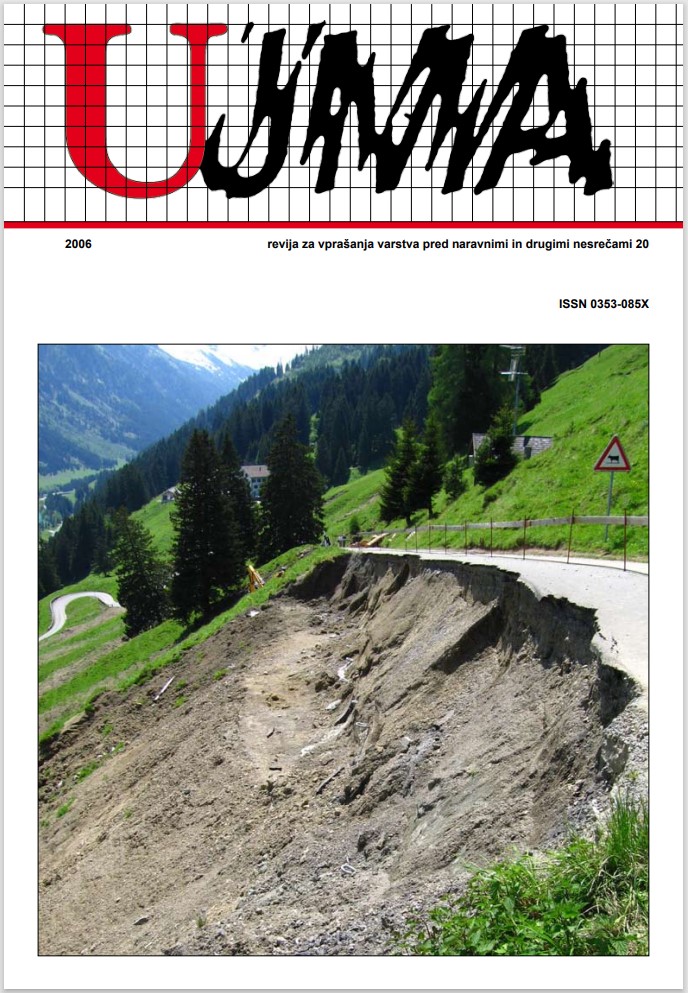CRISIS MANAGEMENT THEORY
Abstract
The author draws attention to the importance of crisis communication as one of the key elements of the management and leadership process in modern complex crises. He highlights the basis of empirical results that researchers of crises have obtained in recent years in Slovenia and other European countries. The author places crisis communication within crisis management and leadership and demonstrates its linkage and interdependence with other elements of this process. He outlines a theoretical definition of the phenomenon of crisis communication and identification of the circumstances that accompany it, in which he highlights the process of globalisation, widening and deepening of mass communication, the stratification of contemporary societies and the degradation of the authority of state authorities. He places particular stress on the role of the mass media in creating linkage during crises and providing information for effective crisis management and leadership. The author provides some theoretical and empirical supplements for creating an effective strategy and tactics of communication in crises, in which he proposes openness, pro-activeness and the credibility of the authorities in communicating with various publics.
References
Amendola, A. and De Marchi, B.,1996. Communication in Chemical Emergencies. Journal of Contingencies and Crisis Management . Vol. 4, No. 1, str. 45–50.
Arpan, L. M. and Pompper, D., 2003. Stormy weather: testing ‘stealing thunder’ as a crisis communication strategy to improve communication flow between organizations and journalists. Public Relations Review. Vol. 29, No. 3, str. 291–308
Bacot, A. H., McCabe, A. S. and Fitzgerald, M. R., 1998. Articulating Environmental Policy Decisions to the Public . Journal of Contingencies and Crisis Management . Vol. 6, No. 3, str. 129-136.
Bernhardsdottir, A. E. and Svedin, L., 2004. Small State Crisis Management: The Icelandic Way. Stockholm: CRISMART.
Bernstein, A. B., 1987. The Emergency Public Relation Manual (3rd edition). New Jersey: Pace Inc.
Boin, A. and Lagadec, P., 2000. Preparing for the Future: Critical Challenges for the Future. Journal of Contingencies and Crisis Management . Vol. 8, No. 4, str. 185–191.
Boin, A., t’Hart, P., 2001. Public Leadership in Times of Crisis: Mission Impossible? Delovni referat na Leiden University.
Brändström, A., Malešič, M. (eds.), 2004. Crisis Management in Slovenia: Comparative Perspectives. Stockholm: CRISMART.
Coombs, T. W., 1995. Choosing the right words: The development of guidelines for the selection of the ‘appropriate’ crisis-response strategies. Management Communication Quarterly, Vol. 4., No. 8 str. 447-476.
Coombs, T. W., 1999. Ongoing Crisis Communication: Planning, Managing and Responding. Thousand Oaks: Sage Publications.
Coombs, T. W., 2001. Teaching the Crisis Management/Communication Course. Thousands Oaks: Sage Publications.
Fearn-Banks, K., 2002. Crisis Communications, Mahwah: LEA.
Fearn-Banks, K., 2001. Crisis Communication: A Review of Some Best Practices. V: Heath, R. L., and Vasquez, G. M. (eds.), 2001. Handbook of Public Relations. Thousands Oaks: Sage Publications.
Gutteling, J. M. & Wiegman, O. W., 1996.Exploring Risk Communication, Dordrecht: Kluwer Academic Publishers.
Hansen, D., 2003. The Crisis Management of the Murder of Olof Palme. Stockholm: CRISMART.
Heath, R. L., 2004. Crisis Preparation: Planning for the Inevitable. V: Millar, D. P. and Heath, R. L. (eds.)., 2004. Responding to Crisis: a Rhetorical Approach to Crisis Communication. Mahwah: Lawrence Earlbaum Associates.
Heath, R. L. and Millar, D. P., 2004. A Rhetorical Approach to Crisis Communication: Management, Communication Processes, and Strategic Responses. V: Millar, D. P. and Heath, R. L. (eds.)., 2004. Responding to Crisis: a Rhetorical Approach to Crisis Communication. Mahwah: Lawrence Earlbaum Associates.
Johansson, I. and Skoglung, P. (eds.)., 1996. Crisis Management at the National Level. Stockholm: OCB.
Lerbinger, O., 1997. The Crisis Manager: Facing Risk and Responsibility. Mahwah: Lawrence Earlbaum Associates.
Malešič, M. (ur.), 2004. Krizno upravljanje in vodenje v Sloveniji. Izzivi in priložnosti. Ljubljana: Fakulteta za družbene vede.
Mortensen, M. S., 1997. Public Relations in Crisis and Disaster. A Brief Introduction for Practitioners. Oslo: Atlantic Press.
Newlove, L.; Stern, E. and Svedin, L., 2000. Auckland unplugged. Stockholm: Swedish Agency for Civil Emergency Planning.
Novak, B., 2000. Krizno komuniciranje in upravljanje nevarnosti: priročnik za krizne odnose z javnostmi v praksi. Ljubljana: Gospodarski vestnik.
Porfiriev, B. and Svedin, L. (eds.), 2002. Crisis Management in Russia. Overcoming Institutional Rigidity and Resource Constraints. Stockholm: CRISMART.
Powers, T., Jones, A. and la Varle, B., 1999. Media Interaction with the Public in Emergency Situation: Four Case Studies. Washington: Library of Congress.
Quarantelli, E. L., 1996. The Future is not the Past Repeated: Projecting Disasters in the 21st Century from Current Trends. Journal of Contingencies and Crisis Management. Vol. 4, No. 4, str. 228–240.
Rosenthal, U., Boin, A. R. and Comfort, L. K., 2001. Managing Crises: Threats Dilemmas, Opportunities. Springfield: Charles C Thomas Publisher Ltd.
Stern, E. and Nohrstedt, D. (eds.), 2001. Crisis Management in Estonia. Case Studies and Comparative Perspectives. Stockholm: CRISMART.
Woodyard, T. M., 1998. Crisis Communication: A Commanders Guide to Effective Crisis Communication. Alabama: USAF.
Downloads
Published
Issue
Section
License

This work is licensed under a Creative Commons Attribution-NonCommercial-NoDerivatives 4.0 International License.
The articles are made available to the public under Creative Commons Attribution-NonCommercial-NoDerivatives 4.0 International (CC BY-NC-ND 4.0).


